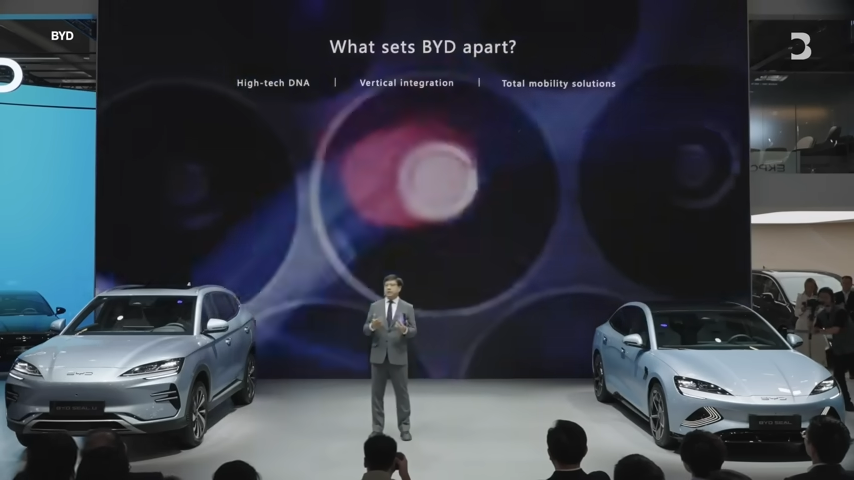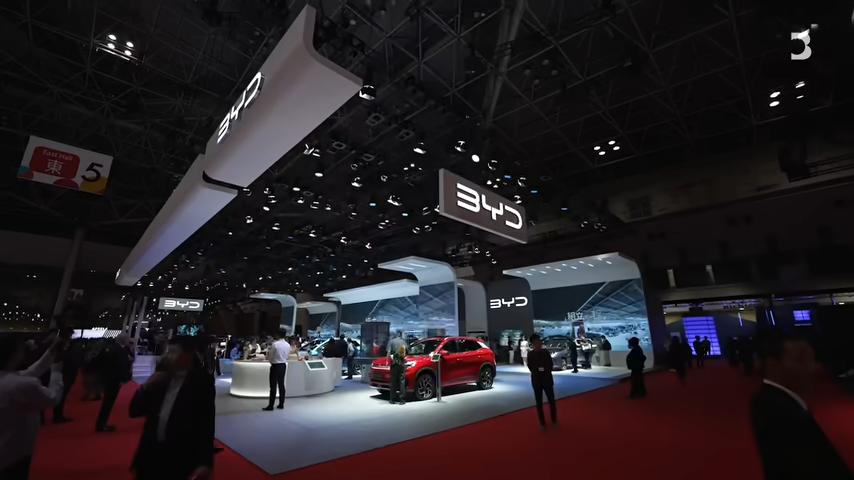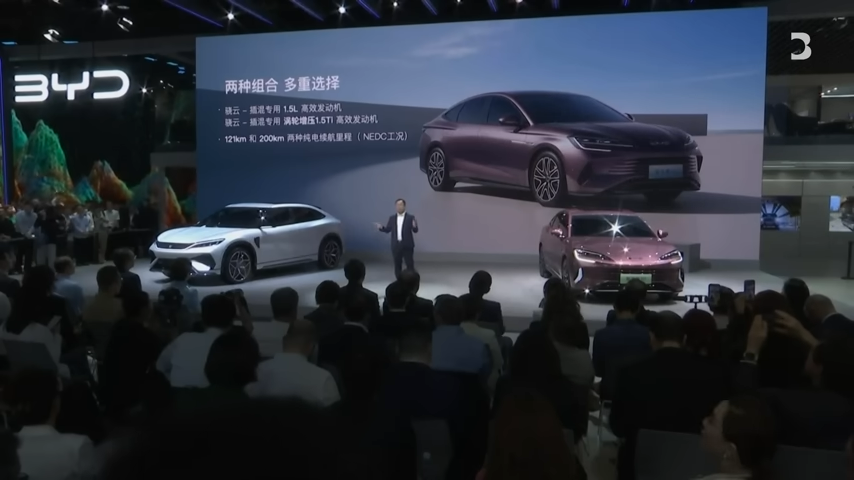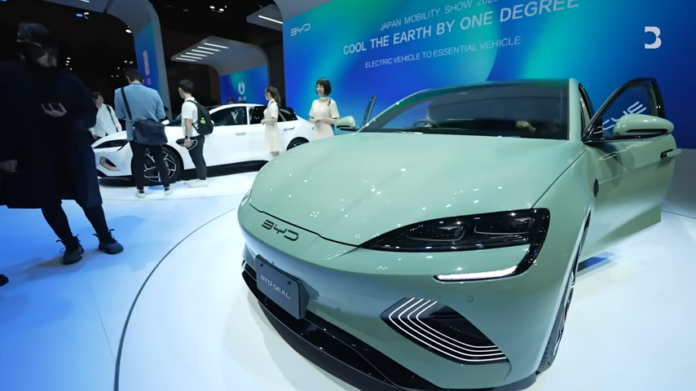The Rise of BYD in the EV Revolution
In the buzzing landscape of electric vehicles (EVs), China’s BYD has stealthily overtaken Tesla to claim the throne as the world’s largest seller of EVs. If you’ve never heard of BYD, you’re not alone, but the quiet giant has been maneuvering strategically to emerge as a dominant force in the $8.8 trillion EV market by the end of the decade.

The Underdog’s Triumph: BYD’s Unlikely Journey to Dominance
BYD’s success isn’t a stroke of luck; it’s a narrative written with the ink of careful planning and support, particularly from the Chinese government. With an estimated $30 billion in tax exemptions since 2010 and the promise of an additional $97 billion by 2027, Beijing has played a pivotal role in BYD’s ascent. This unique blend of incentives and mandates has set the stage for China to be the driving force in the future of transportation.

Three Pillars of BYD’s Triumph
1. Government Support: Carrot and Stick Approach
China’s approach is a nuanced dance of encouragement and pressure. Mandating EV output targets for automakers while sweetening the deal with cheaper loans, land, and R&D subsidies, the Chinese government has crafted an ecosystem where BYD thrives. While Tesla also benefited from Chinese subsidies, BYD’s strategic alignment with government directives gave it a distinctive edge.
2. Affordable Models: The Price War Advantage
BYD’s success isn’t just about government support; it’s about offering affordable options. Unlike Tesla’s strategy of starting with high-end models, BYD opted for a bottom-up approach. Their lineup boasts models starting from an astonishing $10,000, making EVs accessible to a broader market. It’s a tale of cheap taxis and buses driving down battery prices, paving the way for affordable passenger cars.

3. Vertical Integration: The Art of Self-Sufficiency
BYD’s secret weapon is vertical integration. While traditional carmakers source components from various suppliers, BYD makes 75% of the parts for its flagship Seal model in-house. Crucially, BYD is the sole automaker producing all its batteries internally, a game-changer during the pandemic-induced chaos in supply chains. With a history in rechargeable batteries since the ’90s, BYD’s control over its destiny has proven to be a pivotal advantage.

The Buffett Effect: Investor Confidence and Global Ambitions
Warren Buffett, a name synonymous with wise investments, recognized BYD’s potential early on. Through Berkshire Hathaway, he became one of BYD’s significant investors. BYD’s continued promotional roadshow even saw Bill Gates joining the ride. The company’s use of lithium-iron-phosphate batteries, cheaper and more compact, coupled with Wang Chuanfu’s chemistry expertise, positions BYD as a technological frontrunner.

Global Expansion: BYD’s Next Frontier
The question now isn’t just about being the EV king but whether BYD can become one of the world’s largest carmakers overall. To achieve this, BYD is stepping onto the global stage. Initiatives in 2021 saw BYD launching more passenger vehicles in the Middle East, Southeast Asia, and Europe. While it’s a newcomer in these markets, BYD’s rapid rise in places like Thailand, Brazil, and Australia hints at its global potential.

Challenges Ahead: Regulatory Hurdles and Brand Recognition
As BYD embarks on its global odyssey, challenges loom. Regulatory uncertainties, especially regarding Chinese EV subsidies under EU investigation, pose a hurdle. BYD’s response involves increasing local production, a vital strategy to circumvent trade tensions and ensure competitive pricing in foreign markets.
BYD’s Odyssey Continues
BYD’s journey from an unknown battery company to the world’s top EV seller is a testament to strategic vision and adaptability. While the challenges of global expansion are real, BYD’s unique blend of government support, affordability, and vertical integration make it a formidable player in the automotive world. As BYD looks beyond China, its odyssey to become a global automotive giant is only just beginning.

FAQs
1. What sets BYD apart from other electric vehicle manufacturers?
BYD’s success is attributed to a combination of strong government support, offering affordable EV models, and a unique strategy of vertical integration, producing 75% of its flagship Seal model’s parts in-house, including all its batteries.
2. How did Warren Buffett and Bill Gates get involved with BYD?
Warren Buffett, through Berkshire Hathaway, became one of BYD’s early significant investors. Bill Gates joined the BYD promotional roadshow, impressed by the quality of BYD’s vehicles, reflecting investor confidence in the company.
3. What is BYD’s approach to global expansion?
BYD initiated global expansion in 2021, launching more passenger vehicles in markets like the Middle East, Southeast Asia, and Europe. Despite being a newcomer, BYD has quickly become one of the top-selling EV brands in several international markets.
4. How does BYD handle the regulatory challenges in its global expansion?
BYD is strategically addressing regulatory uncertainties, particularly regarding Chinese EV subsidies under EU investigation, by increasing local production. This approach aims to ensure competitive pricing in foreign markets.
5. What is the significance of BYD’s vertical integration strategy?
BYD’s vertical integration, making 75% of its flagship Seal model’s parts in-house, including all its batteries, gives it flexibility, faster response to market trends, and cost advantages. This self-sufficiency proved crucial during supply chain disruptions, such as those caused by the pandemic.





